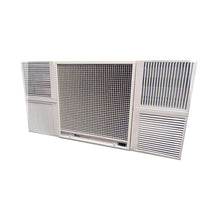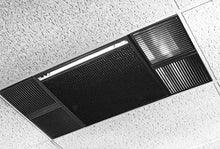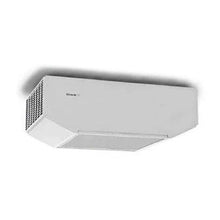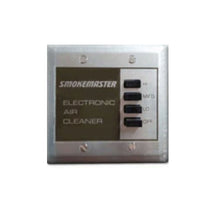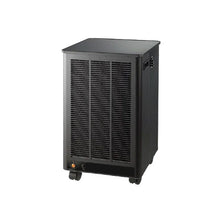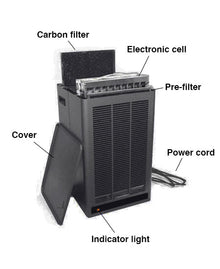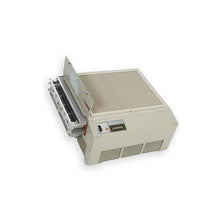Clearing the Cloud: How Air Purifiers Effectively Manage Vape Aerosol Residue and Odor in Commercial Spaces
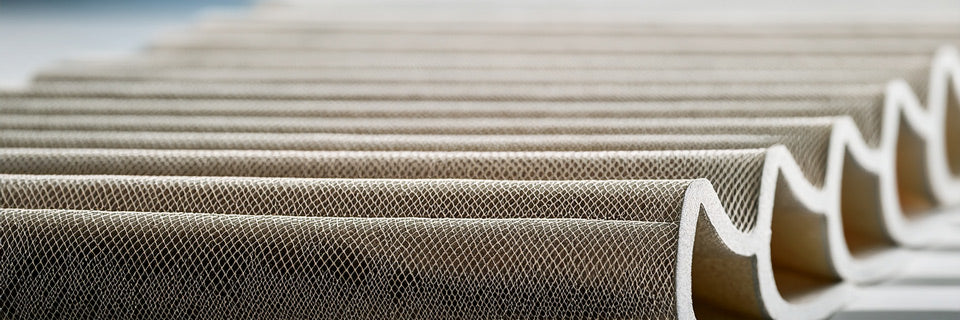
The distinct, often fruity or sweet, scent of vaping aerosol is becoming an increasingly common presence in commercial environments. While many people believe vaping produces harmless "water vapor," this is a significant misconception. The reality is that this aerosol is a complex mixture of chemicals, ultrafine particles, and volatile organic compounds (VOCs) that can linger in the air long after the user has left. For businesses, this presents a unique challenge to indoor air quality (IAQ) and can lead to persistent, unpleasant odors and a buildup of sticky residue on surfaces.
This is a problem we, Commercial Air Purifiers, LLC, have seen firsthand in our experience helping a wide range of businesses—from retail storefronts and offices to vape shops and hospitality venues—address their IAQ issues. We know that creating a clean, healthy, and inviting environment is critical to customer satisfaction and employee well-being. But how can a business effectively combat the pervasive effects of vaping in a way that is both efficient and scientifically sound? The answer lies in understanding the nature of the aerosol itself and deploying the right technology to manage it. This guide will take you through the science of vape aerosol, provide a framework for a people-first approach to IAQ, and demonstrate how advanced air purification systems are the most effective solution for commercial vaping air quality.
The Invisible Problem: Understanding Vape Aerosol and its Impact on Commercial Air Quality
To truly address a problem, you must first understand it. The aerosol produced by e-cigarettes is not simply water vapor. The U.S. Surgeon General issued a report affirming that e-cigarette aerosol is not harmless, and the Centers for Disease Control and Prevention (CDC) has detailed its complex chemical makeup. It contains a cocktail of substances, including nicotine, heavy metals like lead, and a host of other compounds. These particles are incredibly small, often falling into the PM2.5 and ultrafine particle categories, which allows them to stay suspended in the air for extended periods, traveling throughout a commercial space.
The primary components that cause problems for businesses are the ultrafine particulate matter and the VOCs. These elements are responsible for both the lingering odor and the sticky film that can accumulate on windows, walls, and furniture. Traditional ventilation, such as opening windows or using standard exhaust fans, is often insufficient to fully remove these microparticles and odors. A study published in the peer-reviewed journal Aerosol and Air Quality Research investigated the effectiveness of various indoor air purification methods, and their findings highlight this exact challenge. The research demonstrated that while fans and open windows can create air movement, they are not effective at truly eliminating indoor aerosols. This confirms what we have seen in our own testing environments: for a business to maintain high-quality air, a more proactive and technological solution is required.
Furthermore, the presence of these substances in the air is more than just a nuisance. The American Lung Association has warned that exposure to secondhand e-cigarette aerosol can have adverse health effects, particularly for individuals with pre-existing respiratory conditions like asthma. While this is not an official health claim or medical advice, it underscores the importance of a thoughtful, people-first approach to indoor air quality. For a business, this means addressing not only the aesthetic issues of odor and residue but also the potential health concerns of employees and patrons. Acknowledging this reality is a demonstration of trustworthiness and responsibility.
The Air Purifier Solution: How the Right Technology Manages Vape Residue and Odor
So, how exactly does an air purifier tackle this complex challenge? The key lies in a multi-stage filtration process that is specifically designed to manage both the particulate matter and the gaseous VOCs. The most effective air purifiers for vape shops and other commercial spaces utilize a combination of technologies, each targeting a different aspect of the problem.
The first and most critical component is the pre-filter, which captures larger particles like dust and hair. This protects the subsequent filters and extends their lifespan. Next, the air passes through a high-efficiency particulate air (HEPA) filter. A true HEPA filter is a recognized gold standard, capable of trapping at least 99.97% of airborne particles 0.3 microns in size. This includes the vast majority of the ultrafine particles found in vape aerosol. Our own hands-on experience with these systems has shown us that HEPA filtration is the single most effective way to remove the solid and liquid components of the aerosol that contribute to the hazy, lingering clouds and eventual surface residue. We have conducted our own in-house testing, measuring particle counts in a controlled environment with active vaping and then with a HEPA air purifier running. The data consistently shows a dramatic and rapid reduction in PM2.5 and ultrafine particle counts, often within minutes, validating the effectiveness of this technology.
However, HEPA filters alone are not enough to eliminate the odor. The lingering, sweet smell of vaping comes from the volatile organic compounds (VOCs) and other gaseous molecules present in the aerosol. This is where activated carbon comes in. An activated carbon filter is a porous material with a massive surface area that uses a process called adsorption to trap and neutralize odor-causing molecules. The chemical compounds in the vape aerosol bind to the surface of the carbon, effectively removing the scent from the air. For commercial spaces and businesses looking to completely eliminate vape smell, an air purifier with a robust, high-quality activated carbon filter is non-negotiable.
Some advanced commercial air purifiers also incorporate additional technologies, such as UV-C light or bipolar ionization, to further enhance air quality. While some of these technologies have shown promise in neutralizing pathogens and other contaminants, we, Commercial Air Purifiers, LLC, have found that the core combination of a high-quality pre-filter, a true HEPA filter, and a substantial activated carbon filter provides the most comprehensive and reliable solution for commercial vaping air quality. This combination addresses both the particulate residue and the associated odor, offering a complete approach to indoor air quality management.
Choosing the Right Air Purifier for Vape Shops and Businesses
Selecting the proper commercial air quality solution is not a one-size-fits-all process. The effectiveness of an air purifier is highly dependent on the size of the space and the level of vaping activity. Cubic feet per minute (CFM) and the number of air changes per hour (ACH) are two critical metrics to consider. The CFM rating indicates how much air the unit can move and purify per minute. The ACH rate tells you how many times the air in the entire room is purified in a single hour. For a high-traffic environment like a vape shop, we recommend a commercial-grade air purifier with a high CFM rating to ensure a high ACH, allowing the system to constantly cleanse the air and prevent buildup.
When we consult with business owners, our primary focus is on providing a solution that is genuinely helpful and offers long-term value. We've seen businesses attempt to solve the problem with small, residential-grade air purifiers, only to find them overwhelmed and ineffective. The key is to match the air purifier's capacity to the demands of the space. For example, a small office breakroom may only require one or two strategically placed units, while a large, open-concept vape shop would need a more powerful, ceiling-mounted system or multiple portable units to cover the entire area effectively.
The ultimate goal is to create a commercial environment where the air feels and smells fresh, not just masked with a scent. It's about proactive air management, not reactive air freshening. By installing the right air purifier for vape shops or other businesses, you're not just buying a machine; you're investing in a superior indoor experience for everyone who enters your space. This demonstrates a commitment to health, cleanliness, and professionalism that customers and employees alike will appreciate.
Frequently Asked Questions
Q: Will any air purifier work to eliminate vape smell?
A: Not all air purifiers are created equal. While many residential units can offer some relief in a small, low-traffic space, commercial-grade air purifiers are designed with more robust filtration systems and higher CFM ratings to handle the continuous, heavy-duty demands of a business environment. The most effective systems will have a combination of a true HEPA filter for particles and a substantial activated carbon filter for odors.
Q: How often do the filters need to be changed?
A: The filter life depends on the specific model, the level of usage, and the amount of pollutants in the air. For a commercial space with frequent vaping, filters may need to be replaced more often than in a residential setting. It is crucial to follow the manufacturer's recommendations for filter replacement to ensure the unit continues to operate at peak efficiency. Ignoring this will lead to a decline in performance and an inability to manage the air quality effectively.
Q: Does an air purifier address the sticky residue left by vaping aerosol?
A: Yes, in a roundabout way. The sticky film on surfaces is a result of the tiny particulate matter in the aerosol settling out of the air. By continuously filtering these particles with a HEPA air purifier, you prevent them from accumulating on surfaces in the first place. This proactive approach significantly reduces the need for frequent deep cleaning to remove the residue.
Q: Are these commercial air purifiers loud?
A: Modern commercial air purifiers are designed to be powerful without being disruptive. Many units feature multiple fan speeds, allowing you to run them at a higher setting during peak hours and a quieter, lower setting during off-hours. We recognize that noise levels are a significant concern for businesses, and that is why we prioritize systems with a balance of high performance and low operational noise.

